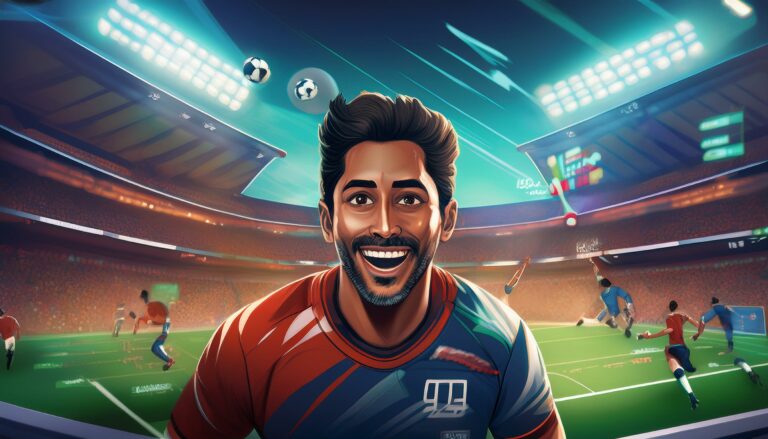The Science of Cricket Bowling Actions: Biomechanics Revealed
Playinexch, Reddy Book Club: Cricket is a game that requires a unique set of skills, with bowling being one of the most challenging aspects of the sport. A fast bowler can send the cricket ball down the pitch at speeds of over 90 miles per hour, while a spinner can deceive batsmen with their magical variations. But what makes a good bowling action? How do biomechanics play a role in the art of bowling in cricket? In this article, we will delve into the science behind cricket bowling actions and reveal the secrets of biomechanics that make a bowler successful.
The Basics of Bowling Actions
Before we dive into the biomechanics of cricket bowling actions, let’s first understand the basic components of a bowling action. A bowling action consists of a sequence of movements that a bowler performs to deliver the cricket ball towards the batsman. These movements can be broken down into various phases, such as the run-up, the delivery stride, the release of the ball, and the follow-through. Each of these phases requires a precise coordination of body movements to generate maximum speed and accuracy while minimizing the risk of injury.
Biomechanics of Cricket Bowling Actions
Biomechanics is the study of how living organisms move, and it plays a crucial role in understanding the mechanics of cricket bowling actions. By analyzing the movements of a bowler in detail, sports scientists can identify the key factors that contribute to a successful bowling action. These factors include the body position at various stages of the bowling action, the coordination of body segments, the transfer of energy from the legs to the arms, and the release of the ball at the right angle and speed.
The Role of Optimal Body Position
One of the key aspects of a successful bowling action is the optimal body position of the bowler at different stages of the delivery. For fast bowlers, a side-on body position is preferred, as it allows for maximum rotation of the hips and shoulders, resulting in greater speed and accuracy. Spin bowlers, on the other hand, may adopt a more front-on position to generate more revolutions on the ball and create different angles of spin.
Additionally, the alignment of the head, shoulders, hips, and feet is crucial in maintaining balance and stability during the delivery stride. Any deviation from the optimal body position can result in a loss of control and diminished performance.
Coordination of Body Segments
Another important aspect of biomechanics in cricket bowling actions is the coordination of body segments throughout the bowling action. A bowler must generate power from the legs and transfer it efficiently through the torso and into the arm to propel the ball forward. This transfer of energy requires precise timing and coordination of muscle activation in different body segments.
For example, fast bowlers generate power by pushing off the back foot during the run-up, transferring weight onto the front foot during the delivery stride, and rotating the hips and shoulders rapidly to generate maximum speed. Spin bowlers, on the other hand, rely more on the wrist and finger movements to impart spin on the ball, requiring a different coordination of body segments.
Release of the Ball
The release of the ball is perhaps the most critical phase of a bowling action, as it determines the speed, trajectory, and movement of the ball. The optimal release point for a fast bowler is typically when the arm is fully extended and perpendicular to the body, allowing for maximum acceleration and follow-through. Spin bowlers, on the other hand, release the ball with different wrist positions to generate variations in spin and trajectory.
The angle of release, the grip on the ball, and the follow-through after releasing the ball all play a crucial role in determining the success of a delivery. By analyzing these aspects of the release, sports scientists can provide valuable insights into how bowlers can improve their performance and develop new variations in their bowling.
Frequently Asked Questions
1. What is the ideal speed for a fast bowler?
The ideal speed for a fast bowler can vary depending on individual factors such as strength, flexibility, and technique. However, most professional fast bowlers aim to bowl at speeds of over 85 miles per hour to challenge batsmen and disrupt their rhythm.
2. How can spin bowlers improve their turn and variations?
Spin bowlers can improve their turn and variations by focusing on their wrist and finger movements, experimenting with different grips on the ball, and varying the speed and flight of their deliveries. Practice, patience, and analysis of their bowling action are key to mastering the art of spin bowling.
3. What are the common injuries associated with bowling actions?
Common injuries associated with bowling actions include stress fractures in the back, shoulder injuries, and knee problems. Bowlers can minimize the risk of injuries by maintaining proper technique, strengthening their muscles through conditioning exercises, and taking adequate rest between bowling sessions.
4. Can biomechanics analysis help bowlers improve their performance?
Yes, biomechanics analysis can provide valuable insights into a bowler’s technique, power generation, and release mechanics, helping them identify areas for improvement and develop a more efficient and effective bowling action. By understanding the science behind their movements, bowlers can make targeted changes to enhance their performance on the field.
5. How can young bowlers develop a strong foundation in bowling actions?
Youth bowlers can develop a strong foundation in bowling actions by seeking guidance from qualified coaches, focusing on mastering the basics of grip, run-up, and delivery stride, and practicing regularly to build strength and consistency in their bowling action. Starting with proper technique and gradually increasing the intensity and complexity of their training can help young bowlers progress and excel in the sport.







